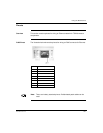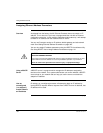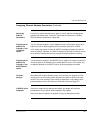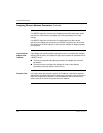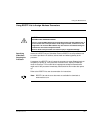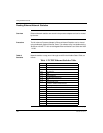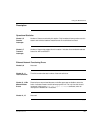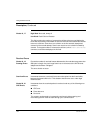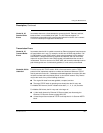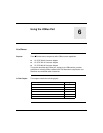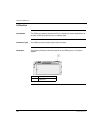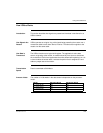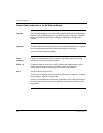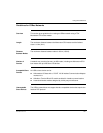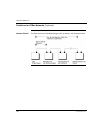
Using the Ethernet Port
870 USE 101 00 V.3 145
Description, Continued
Words 24, 25
Receive Buffer
Errors
Increments whenever a client attempts to connect to the M1 Ethernet, and fails,
because there is no available server path. The M1 Ethernet supports 14
simultaneous data paths and 2 program paths before this counter can increment.
This error indicates poor application architecture.
Transmission Errors
Words 26, 27
Transmit Buffer
Errors
Increments when the M1 is unable to transmit an Ethernet response frame because
all frame buffers are in use. For example, the M1 has 16 PING reply buffers. If all
16 PING buffers contain PING replies, ready to be transmitted, but this station’s
transmission is delayed because of collisions and backoff, and one more PING
request is received, then the new PING request is discarded and the counter is
incremented. This error can occur for PING, ARP, and connection attempt to server
path. Although this error is theoretically possible, it is not usually encountered.
Words 28, 29 Silo
Underflow
This field counts M1 TCP/IP retries. All M1 clients and server use the TCP/IP
protocol which implements sequence numbers and timeouts. Whenever TCP/IP
data is pushed from the M1, a subsequent acknowledgement of receipt of M1 data
must be received within the timeout period, or else the M1 issues a retry. Retries
may be the result of any of the following conditions:
● The original M1 data frame was garbled, corrupted, and lost
● The target TCP/IP stack is operating more slowly than the M1 retry rate
For Modbus 502 servers, the M1 initiates retries after (1, 1, 2, 2, 4, 8) seconds.
For Modbus 502 clients, the M1 retry rate is the larger of:
● 1/4 the health timeout for Ethernet I/O Scanner data (see
Accessing the
Ethernet / I/O Scanner Screen
on page 322,
OR:
● 4 times the previous measured TCP/IP round trip time for i/o Scanner MSTR
block.
Continued on next page



